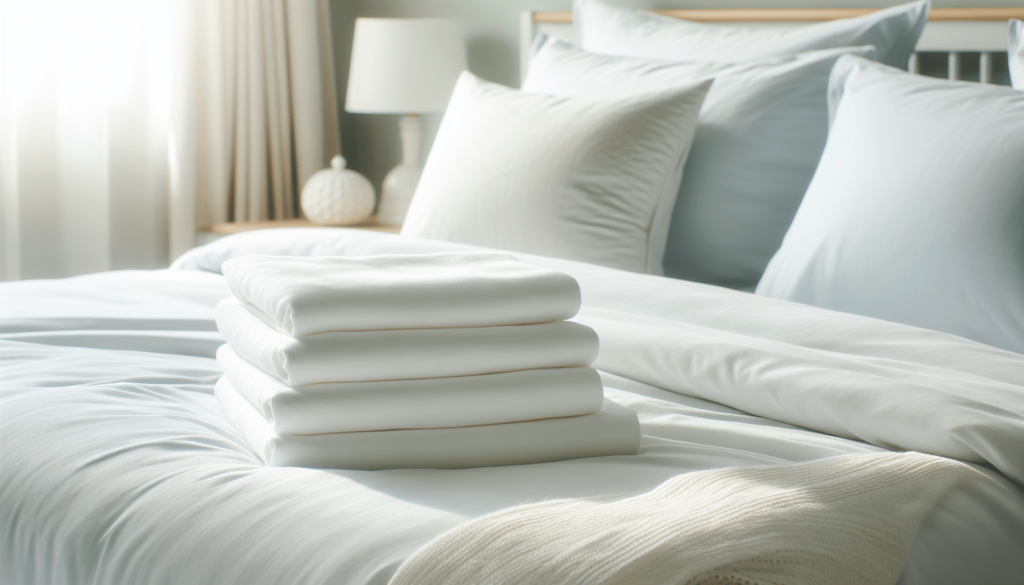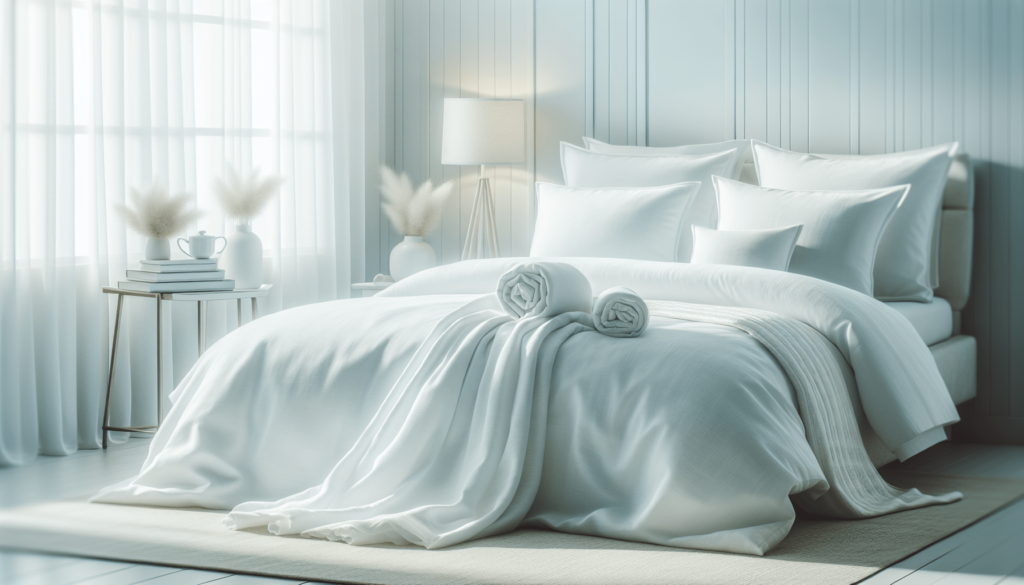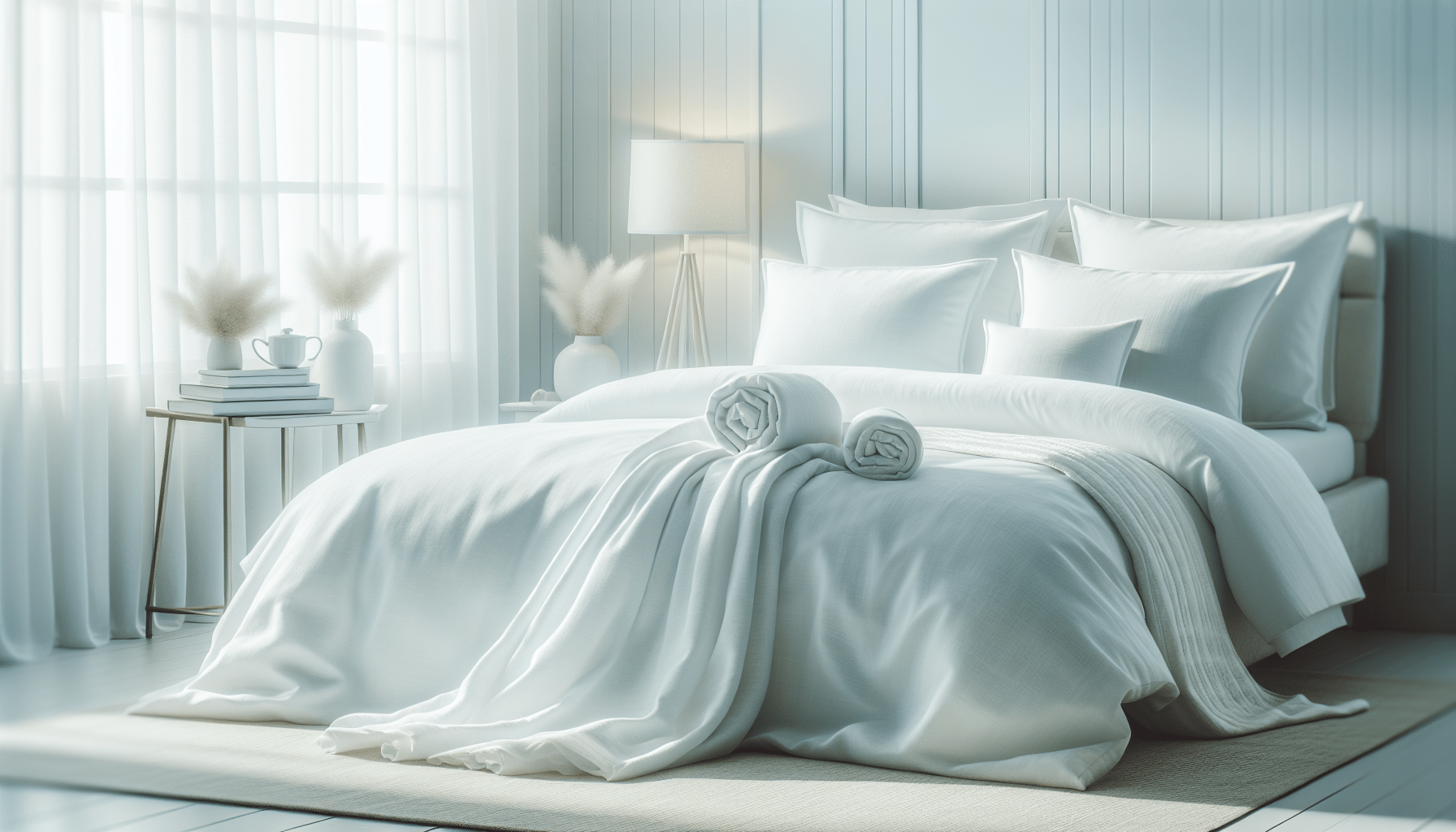Have you ever found yourself sneezing incessantly or experiencing itchy skin after putting on your favorite shirt or lying in bed? If so, you might be suffering from a reaction to common allergens present in clothing and bedding. Allergic reactions can be troublesome and significantly impact your quality of life. That’s why opting for hypoallergenic clothing and bedding becomes a crucial consideration for those who are sensitive to allergens.

Understanding Hypoallergenic Products
What Are Hypoallergenic Products?
Hypoallergenic products are designed to minimize the risk of allergic reactions by using materials less likely to cause irritation. From fabrics to dyes, every component is carefully chosen to offer comfort without compromising on safety.
Why Choose Hypoallergenic Clothing and Bedding?
Making the switch to hypoallergenic clothing and bedding isn’t just a luxury; for many, it is a necessity. Common allergens like dust mites, pet dander, and various chemicals used in traditional fabrics can trigger discomfort, especially if you have conditions like eczema, asthma, or allergic rhinitis.
Key Factors to Consider
Before making your purchases, several factors should be taken into account to ensure you are truly buying hypoallergenic products that suit your needs.
Materials Used
Different materials offer varying levels of hypoallergenic properties. Understanding the pros and cons of each type can help you make informed decisions. Here’s a breakdown of commonly used hypoallergenic materials:
| Material | Pros | Cons |
|---|---|---|
| Organic Cotton | Natural, breathable, and free from harsh chemicals | Can be more expensive |
| Bamboo | Soft, moisture-wicking, and naturally antimicrobial | May require special care in laundering |
| Silk | Smooth texture, natural hypoallergenic qualities, and regulates temperature | High maintenance and can be costly |
| Wool | Naturally resistant to dust mites and mold, and highly breathable | Some people may still be allergic to lanolin |
| Synthetic Blends | Designed to resist allergens and often more affordable | May not be environmentally friendly |
Anti-allergy Treatments
Some hypoallergenic products undergo additional treatments to boast enhanced protective qualities. These treatments may include anti-dust mite solutions or antimicrobial coatings. While these can be beneficial, it’s essential to look for certifications to ensure they are safe and non-irritating.
Certifications and Standards
Opt for products certified by reputable organizations. Certifications from entities like the Global Organic Textile Standard (GOTS) or the Oeko-Tex Standard 100 can provide an added level of assurance that the product is free from harmful chemicals.
Hypoallergenic Clothing Guide
Selecting hypoallergenic clothing involves more than just checking the label. It’s about knowing which fabrics to choose, how to care for them, and what styles are best for sensitive skin.
Best Fabrics for Sensitive Skin
Hypoallergenic fabrics are your best line of defense against skin irritations. Let’s go beyond the basics to explore how each material can meet your needs.
Organic Cotton
Organic cotton is free from pesticides and synthetic fertilizers, making it a safer choice for sensitive skin. It is also breathable and soft, providing comfort throughout the day.
Bamboo
Bamboo fabric is another excellent choice due to its natural antimicrobial properties and incredible softness. It’s also a sustainable option, as bamboo grows rapidly and requires fewer resources.
Silk
Silk is famously smooth, reducing friction that can irritate sensitive skin. Additionally, it’s naturally hypoallergenic and breathable, keeping you cool in the summer and warm in the winter.
Styles and Garment Types
Choosing the right fabric is vital, but so is selecting the appropriate style. Loose-fitting clothes generally reduce the chance of irritation as they do not cling tightly to the skin.
Shirts and Tops
Go for loose-fitting, long-sleeve shirts to minimize direct contact with allergens. Look for options without tags or choose those with flat seams to avoid unnecessary irritation.
Pants and Bottoms
For pants, opt for relaxed fits over skinny jeans or leggings, which may suffocate your skin and trap moisture. Drawstrings and elastic waists are good features to look for.
Caring for Your Hypoallergenic Clothing
Proper care can prolong the lifespan and effectiveness of your hypoallergenic garments. Most sensitive fabrics require gentle washing and low-temperature drying. Here are some general tips:
- Use fragrance-free detergents: Fragrances can cause allergic reactions, so it’s best to avoid them altogether.
- Wash in cold water: This helps preserve the integrity of the fabric.
- Air dry when possible: Heat from dryers can damage delicate fibers.
Hypoallergenic Bedding Guide
Switching to hypoallergenic bedding can lead to restful, uninterrupted sleep. Bedding can be a breeding ground for dust mites and other allergens, making it essential to choose wisely.
Types of Hypoallergenic Bedding
Several types of bedding items need attention, from mattress protectors to pillowcases. Each contributes to creating a safe sleep environment.
Sheets and Pillowcases
These are in direct contact with your skin, so choosing hypoallergenic options here is a must. Organic cotton and bamboo are excellent choices. Look for high thread counts, as they are tighter woven and can better fend off dust mites.
Comforters and Duvets
Consider filling materials when selecting comforters and duvets. Down alternatives made from hypoallergenic materials like microfiber or polyester are good options. Look for tightly woven, encased designs that prevent dust mites and allergens.
Mattress and Pillow Protectors
These barriers protect your mattress and pillows from becoming breeding grounds for dust mites and other allergens. Waterproof options add an extra layer of protection and are ideal for those with severe allergies.
Features to Look For
When shopping for hypoallergenic bedding, there are specific features to consider.
Breathability
Materials like organic cotton and bamboo wick away moisture, which discourages the growth of mold and dust mites. Prioritize breathable fabrics to ensure you stay cool and dry.
Easy Maintenance
Hypoallergenic bedding should be easy to clean. Most should be machine washable at high temperatures to effectively kill allergens. Always check care labels for specific instructions.
Durability
Hypoallergenic does not mean compromising on quality. Durability is essential, especially since hypoallergenic bedding is subject to frequent washing. Look for products with reinforced stitching and robust materials.

Common Allergens in Clothing and Bedding
Understanding what you are avoiding is essential when choosing hypoallergenic products. Several elements in traditional clothing and bedding can cause allergic reactions.
Dust Mites
These microscopic creatures thrive in bedding due to the warm, humid environment. They can trigger respiratory issues and skin irritation. Hypoallergenic materials act as barriers to these pests.
Chemical Dyes
Fabrics treated with chemical dyes can irritate sensitive skin. Opt for naturally dyed or undyed options when available.
Formaldehyde
Used in some treatments to make fabrics wrinkle-resistant, formaldehyde can cause significant irritation. Organic choices are generally free of this chemical.
Latex
Though latex offers excellent comfort and support, it can cause allergic reactions in some individuals. Consider latex-free options if you have latex sensitivity.
Hypoallergenic Products for Babies and Children
Babies and young children have highly sensitive skin and developing immune systems, making hypoallergenic clothing and bedding a critical choice for them.
Baby Clothing
Opt for organic cotton or bamboo garments for babies. These materials offer softness and breathability, ensuring comfort throughout the day and night.
Bedding Essentials
Hypoallergenic crib sheets, mattress protectors, and blankets help create a safe sleeping environment for your child. Look for products that are machine washable and free from harmful substances.
Toys and Accessories
Even toys can harbor allergens. Choose hypoallergenic, washable toys and avoid those with potential irritants like certain dyes or synthetic fibers.
Hypoallergenic Accessories
Choosing hypoallergenic isn’t just limited to clothing and bedding; other accessories can also make a big difference.
Scarves and Hats
Winter clothing like scarves and hats are often overlooked but can also cause irritation. Opt for items made from hypoallergenic materials like bamboo or organic cotton.
Towels
Hypoallergenic towels can be beneficial, especially for those with sensitive skin. Look for organic cotton or bamboo options that are soft and free from harsh chemicals.
Laundry Bags and Hamper Liners
Even how you store and wash your clothing matters. Hypoallergenic laundry bags and hamper liners can help keep allergens at bay.
Tips for Shopping Hypoallergenic Products
Finding the best hypoallergenic clothing and bedding can sometimes feel overwhelming, but these tips can guide you through the process.
Read Labels Carefully
Always check labels for material content, certifications, and care instructions. Look for words like ‘organic’ and ‘hypoallergenic,’ and beware of marketing jargon that may not always guarantee safety.
Reviews and Recommendations
Customer reviews can provide invaluable insights into the product’s effectiveness and comfort. Websites often highlight reviews from people with similar allergies, giving you a more tailored viewpoint.
Trial Periods and Return Policies
Many companies offer trial periods, especially for bedding products. Take advantage of these offers to ensure the product suits your needs before making a long-term commitment.
Budget Considerations
While hypoallergenic products can sometimes be pricier, remember that you’re investing in your health. Compare different brands and products to find the best value for your money without compromising on quality.
Conclusion
Choosing hypoallergenic clothing and bedding can significantly improve your quality of life, especially if you have sensitive skin or respiratory issues. By paying close attention to materials, treatments, and certifications, you can make more informed decisions and find products that offer both comfort and protection. Making these choices for yourself, your family, and especially for your children can pave the way for healthier, happier living environments and restful nights.
Understanding what makes a product hypoallergenic and being mindful of potential allergens can help you make the best choices for your needs. From selecting the right fabrics to caring for your products properly, each step you take is a move toward a safer, more comfortable life. Enjoy the peace of mind that comes from knowing you’re doing the best for your health and well-being.
